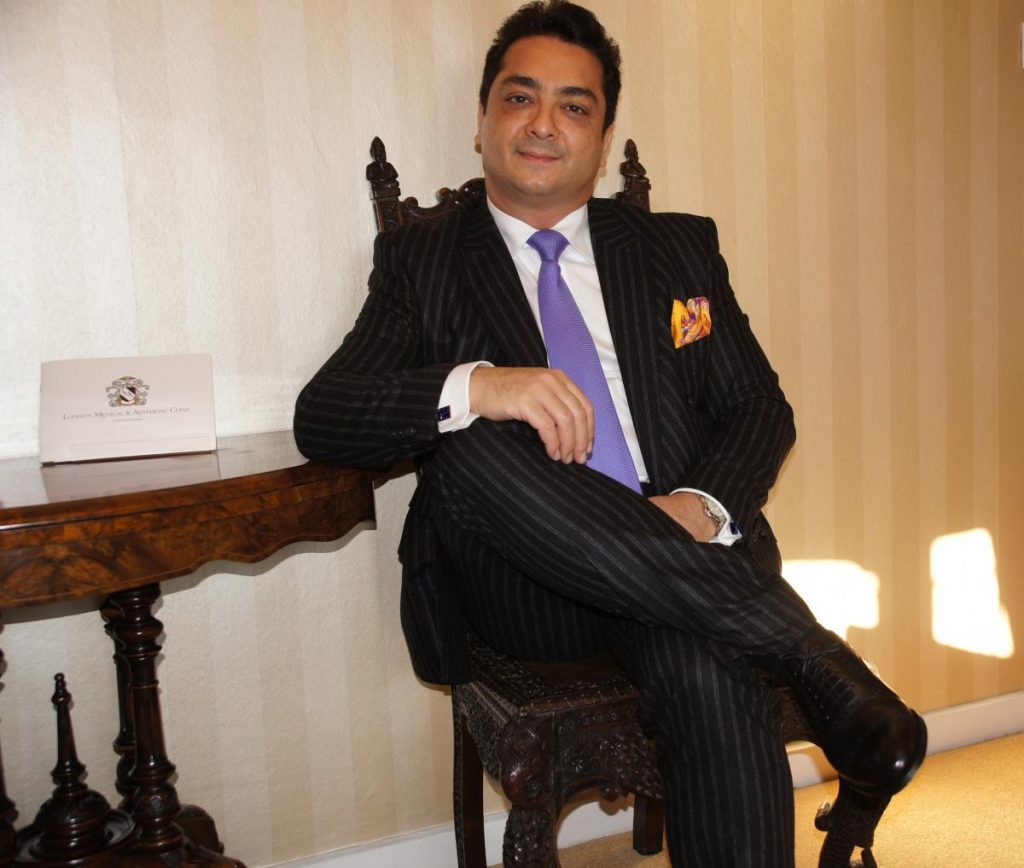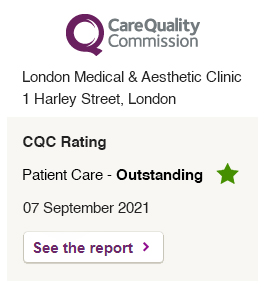Chemical peels are increasing in popularity as men and women are now looking for non-surgical ways to fight the signs of ageing and improve their appearance.
Peels are simple to perform and they are fast-acting which makes them a great alternative or in combination with Botox and fillers.
Whether you are trying to get rid of acne scars, reduce wrinkles or tackle pigmentation issue, peels are a great option to tackle the signs of ageing.
The way that chemical peels work is quite simple. The solution is applied to the skin. The chemicals then gently peel away the top layer of the skin to reveal fresh new skin beneath.
Superficial chemical peels can be used which peel the top layer of the skin only, or medium and deep chemical peels can be used to penetrate down deeper into the skin to address more serious skin issues.
At London Medical and Aesthetic Clinic we use the most advanced and effective chemical peels to help patients achieve fantastic results.

Types of peels
- Superficial Chemical peels
Superficial chemical peels are the gentlest types of peels. These peels are usually made from alpha hydroxy or beta hydroxy acids. They only remove the epidermis which is the top layer of the skin. The results are an instantly revived and smoother skin. The most common use of these peels is to reduce fine lines a give a smoother brighter complexion.
They can also be used to lessen the appearance of sun damage or mild acne scarring. Between six and ten treatments are usually needed to obtain the best results.
The peel does not hurt and there is practically no recovery time so patients can return to work straight after the treatment. Some minor flaking or pinkness might occur but this can be covered with makeup.
- Medium Chemical peels
Medium peels give more striking results than the lighter peels. They are usually derivatives of trichloroacetic acid. These peels go through deeper into the skin and are very effective in treating sun damage, pigmentation, wrinkles and acne spots.
The old skin peels off revealing the new layer of brighter, undamaged skin. There is a longer recovery period and more side effects associated with this peel and the patient may feel more discomfort than having a light peel, however, these peels are still very gentle to the skin when compared to Laser Skin Resurfacing or Phenol Peeling.
The new layer of skin may be a reddish colour initially but this discolouration will dull and fade within a week to show the new rejuvenated skin. The full healing process takes approximately two weeks. Dr Ayham Al-Ayoubi uses TCA peels to achieve maximum results.

- Deep Chemical peels
Deep chemical peels are the most intrusive types of peels. The most common type of deep peel is phenol peel. They permeate deeper into the skin than light or medium chemical peels and address more acute skin problems such as sun damage, acne scars, blemishes and deep wrinkles.
Sedation is usually used during the treatment and sometimes it is performed under general anaesthetic as the procedure can be quite uncomfortable.
Only a single treatment is required as these peels give powerful results. The treatment must be used on the full face; it is not suitable for treating singular parts of the face. The recovery period for these types of peels is quite long.
Patients typically are advised to take a week off work to recover at home. The effects of these peels last for years. The full recovery period can take up to three months.
Skin preparation
Dr Ayham Al-Ayoubi assesses and decides on the most suitable treatment option for the patient depending on desired results, skin types and what areas of the skin the patient wants to be rejuvenated. A suitable skin preparation plan will then be advised.
The skin may need to be prepared from two to eighteen weeks before treatment depending on which peel has been chosen. This is done by daily cleansing and moisturising the skin once or twice during the day and applying sunscreen every day.
Daily use of tretinoin, which is a medicine used to treat acne is sometimes advised as it has been shown to speed healing. The skin care regime will help to speed up the recovery process, reduce the risk of adverse effects or complications such as colour changes and it will help the skin peel more evenly.
A small course of anti-viral medication is sometimes prescribed for patients who are due to have a medium or deep chemical peel to prevent infection especially when the treatment is around the eyes or the mouth.

Dr Ayham Al-Ayoubi: Chemical peels involve the application of the topical chemical solution to the skin or face that aims to improve the face or skin by a controlled destruction of a specific part of the skin. The dead layer of skin is removed and this results in a regeneration of newer healthier skin tissue. This new layer of skin has reduced blemishes and pigmentation and is smoother and less wrinkled than the old layer.
Chemical peels have been around for centuries. Ancient Egyptian women were said to have used sour milk, which contains lactic acid, to rejuvenate their skin. Ancient Romans would exfoliate their skin with the skins of grapes which contained tartaric acid.
This shows that skin has always been important to men and women throughout the ages. Dermatologists have been using chemical peels from the early 1950’s. Chemical peels are a popular procedure due to their effectiveness in reversing the signs of ageing.
Dr Ayham Al-Ayoubi has an expert understanding of the different types of chemical peels, how they work, desirable results and potential complications. This allows him to choose the best treatment possible for each individual case.
To read more about chemical peels click here.
To read more Blogs by Dr Ayoubi click here.





